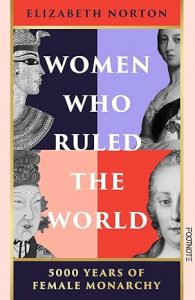‘Some of the stories told in these records, of pretenders to the throne, of people who laid claim to the throne and others whose names were used in vain as part of rebellions, uprisings, and plots.
The series gets its name from the leather bags that these records were contained in.
Our next pretender is Lady Jane Grey, the nine days queen that reigned between Edward VI and Mary I in 1553.
For the purposes of this talk, Lady Jane Grey is a pretender to the throne because that is what Mary I accused her of being in her trial records.
The Protestant Edward VI not wanting his Catholic sister Mary to succeed him, had instead named Lady Jane Grey as his successor.
One of Mary I’s first acts as Queen was to punish these usurpers, including Lady Jane Grey.
Lady Jane Grey was tried in November of that same year along with Archbishop Cranmer, Guildford Dudley, Ambrose Dudley and Henry Dudley.
It is these trial records that are contained in KB 8/23 and pictured on the slide is the leather bag that these records would have been kept in.
The lettering on the bag was a Latin inscription saying where and when this trial occurred.
At the Guildhall in the City of London on 13 November 1553 before the Mayor of London, Sir Thomas White.
The indictment of Lady Jane Grey is collected with her trial records.
The indictment describes how Guildford Dudley and his wife, Lady Jane took possession of the Tower of London and proclaimed Jane to be the true and undoubted Queen of England.
Though Jane could have claimed to be a pawn in these machinations, what ultimately condemned her, was the fact that she signed several writings as Jane the Quene, ie. she denied the authority of and usurped the true Queen, Mary I.
This document is another really common record in the bag of secrets series. It is a commission of oyer and terminer, which was special commissions made by the crown to investigate wrong doing.
Authorised by the crown using the royal seal.
This commission dated 11 November 1553, appointed the judges for the trial of Lady Jane Grey and the others, which would take place 2 days later.
Here’s the seal attached to this commission in a little more detail, along with an image of the beginning of the commission which begins ‘Maria, the Latin for Mary.
The great seal was how the crown authenticated documents. When a monarch succeeded to the throne, one of the first things that had to happen was that a new great seal was made, to replace the seal of the previous monarch.
However, Lady Jane Grey’s trial happened so soon into Mary I’s reign that the new great seal had not yet been made. So Mary was forced to authenticate the commission using the great seal of her predecessor, Edward VI.
Considering that it was Edward’s device for the succession that had named Jane as his successor in the first place, there is a great irony that his seal would be used to authorise Jane’s trial.
Another key record collected in the bag of secrets was the pleadings or plea rolls which contained the copies of the indictments and the verdict of those on trial.
These plea rolls are made on the day of the trial. Lady Jane Grey and all those who were tried with her were found guilty of high treason against Mary I.
The trial record states that Lady Jane Grey was to be burned alive on Tower Hill or beheaded, as the Queen should please.














































